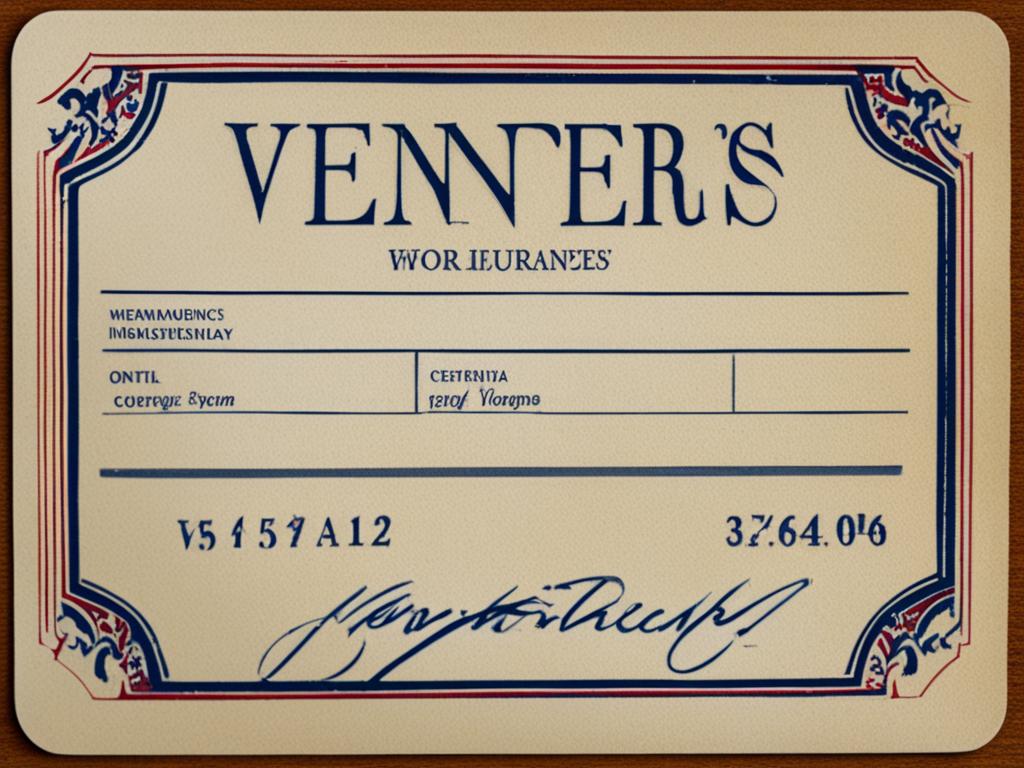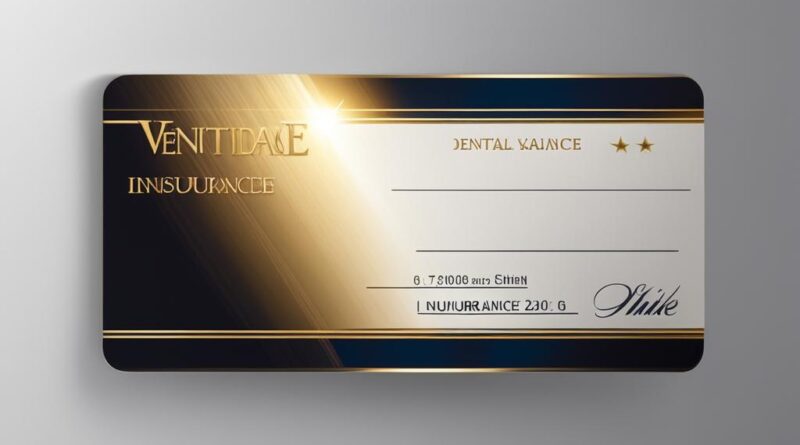Does Insurance Cover Veneers? Your Key Coverage Guide
Dental veneers, which are thin shells made of porcelain or composite material that are bonded to the front of teeth, have gained popularity as a cosmetic procedure. However, understanding insurance coverage for veneers can be challenging. This guide will provide clarity on when veneers are covered by insurance and offer insights for those without insurance or medical billers looking to help patients get their veneers reimbursed.
Key Takeaways:
- Insurance coverage for veneers can be considered a gray area since they are often categorized as a cosmetic procedure.
- Factors that can influence coverage include the distinction between cosmetic procedures and medical necessity, pre-existing conditions, and inclusions and exclusions in specific insurance plans.
- Communication with both the dentist and insurance provider is crucial in understanding coverage and potential out-of-pocket costs.
- Coverage for veneers and other dental procedures performed by out-of-network dentists depends on the specific insurance plan.
- Dental insurance plans vary in terms of coverage levels, definitions of medical necessity, and exclusions.
When Are Veneers Covered by Insurance?
Insurance coverage for veneers can be considered a gray area since they are often categorized as a cosmetic procedure. However, there are instances where veneers might be deemed medically necessary and therefore covered by insurance. Factors that can influence coverage include the distinction between cosmetic procedures and medical necessity, pre-existing conditions, inclusions and exclusions in specific insurance plans, consideration of alternative treatments, frequency limitations, deductibles, copays, and maximums, and pre-authorization requirements. Open communication with both the dentist and insurance provider is crucial in understanding coverage and potential out-of-pocket costs.
While veneers are primarily considered a cosmetic treatment, there are circumstances in which they may be deemed medically necessary and be covered by insurance. The key factor that determines coverage is whether the procedure is deemed medically necessary to address functional or health-related issues rather than purely for cosmetic purposes. Additionally, insurance coverage for veneers can vary depending on the specific insurance plan and its inclusions and exclusions. It is important to carefully review your insurance policy and consult with your insurance provider to understand your coverage, including any potential out-of-pocket expenses.
When it comes to insurance coverage for veneers, it’s important to understand the distinction between cosmetic desire and medical necessity. Insurance plans typically cover procedures that are medically necessary rather than purely cosmetic. However, there are cases where veneers may be considered medically necessary, such as when they are required to restore the functionality of damaged teeth or improve oral health. Pre-authorization may be required in such cases, and it’s important to communicate with both your dentist and insurance provider to determine coverage and potential costs.
| Coverage Factors | Considerations |
|---|---|
| Medical necessity vs. cosmetic desire | Insurance plans typically cover procedures that are medically necessary rather than purely cosmetic. |
| Pre-existing conditions | Pre-existing conditions can impact insurance coverage for veneers. |
| Inclusions and exclusions in insurance plans | Specific insurance plans may have inclusions and exclusions that affect coverage for veneers. |
| Consideration of alternative treatments | Insurance providers may require consideration of alternative, more cost-effective treatments before approving coverage for veneers. |
| Frequency limitations | Insurance plans may have restrictions on the frequency of coverage for veneers. |
| Deductibles, copays, and maximums | Out-of-pocket expenses such as deductibles, copays, and maximums may apply for veneer procedures. |
| Pre-authorization requirements | Some insurance plans require pre-authorization for veneer procedures. |
Are Out-Of-Network Veneers Covered by Insurance?
Coverage for veneers and other dental procedures performed by out-of-network dentists depends on the specific insurance plan. Health Maintenance Organization (HMO) plans typically restrict coverage to in-network dentists, while Preferred Provider Organization (PPO) plans may cover a portion of out-of-network procedures. However, coverage for out-of-network procedures is often lower, resulting in higher out-of-pocket expenses for the patient.
When considering veneers, it’s essential to review your insurance policy and understand the coverage limitations. Many insurance plans prioritize in-network providers, which can significantly impact your out-of-pocket costs when seeking out-of-network veneers. While there may still be some coverage available for out-of-network procedures, it’s crucial to be prepared for higher expenses and potentially more limited reimbursement.
If you’re considering veneers and have specific preferences for an out-of-network dentist, it’s worth contacting your insurance provider directly to inquire about coverage options. Some insurance plans may offer a percentage of coverage for out-of-network procedures, but it’s essential to clarify the details and potential reimbursement amounts. Understanding your insurance coverage can help you make an informed decision when choosing a dentist and planning for any out-of-pocket expenses related to veneers.
Table: Veneers Coverage Comparison – In-Network vs. Out-of-Network
| Insurance Plan | In-Network Coverage | Out-of-Network Coverage | Notes |
|---|---|---|---|
| HMO | Usually covered | Not covered | HMO plans typically restrict coverage to in-network dentists. |
| PPO | Partial coverage | Lower coverage | PPO plans may offer some coverage for out-of-network procedures, but reimbursement amounts are often lower. |
| Other Plans | Varies | Varies | Insurance plans differ, and coverage for out-of-network procedures depends on the specific policy. |
In summary, coverage for out-of-network veneers varies depending on the insurance plan. HMO plans typically do not cover out-of-network procedures, while PPO plans may offer partial coverage with lower reimbursement amounts. Other insurance plans have their own unique coverage policies, and it’s crucial to review your specific insurance policy and consult with your provider for accurate information on out-of-network veneer coverage.
How Does Dental Insurance Cover Veneers Differ Based on Your Plan?
Understanding how dental insurance covers veneers can provide valuable insights into the potential costs and reimbursement options available. Dental insurance plans vary in their coverage levels, definitions of medical necessity, and exclusions, which can impact the extent to which veneer treatments are covered.
Here are some key factors that can influence how dental insurance covers veneers:
- Coverage levels: Different dental insurance plans may offer varying degrees of coverage for veneer procedures. Some plans may provide 50% coverage for medically necessary veneers, while others may not cover them at all.
- Definitions of medical necessity: Dental insurance often categorizes veneers as a cosmetic procedure. However, there may be instances where veneers are deemed medically necessary, such as for severe tooth damage or structural issues. Understanding how your insurance plan defines medical necessity can help determine potential coverage.
- Exclusions: Dental insurance plans may have specific exclusions for certain procedures or treatments, including veneers. Reviewing your policy can help identify any limitations or exclusions related to veneer coverage.
- Waiting periods and policy renewals: Some dental insurance plans may have waiting periods before covering certain procedures, including veneers. Additionally, policy renewals or changes can affect coverage, so it’s essential to review your policy regularly.
Consulting with your dental insurance provider and reviewing your policy document are crucial steps in understanding the specific coverage and potential reimbursement for veneer treatments. By being proactive and informed, you can make decisions regarding your dental care that align with your budget and oral health goals.

Table: Comparison of Dental Insurance Coverage for Veneers
| Insurance Provider | Coverage for Veneers | Percentage of Coverage | Exclusions |
|---|---|---|---|
| Dental Insurance Provider A | Partial Coverage | 50% | Excludes cosmetic veneers |
| Dental Insurance Provider B | No Coverage | N/A | Excludes all veneer procedures |
| Dental Insurance Provider C | Full Coverage | 100% | No exclusions for veneers |
Note: The table above is a hypothetical example and does not reflect actual insurance coverage. It is intended for illustrative purposes only.
How to Find Dental Veneers Covered by Insurance
Navigating dental insurance coverage for veneers can be daunting. To determine potential insurance coverage for dental veneers, it’s essential to understand your specific needs and the types of veneers available. Reviewing your insurance policy document, contacting your insurance provider directly to inquire about coverage, obtaining pre-treatment estimates, checking for in-network vs. out-of-network dentists, exploring alternative or supplemental insurance options, and reading customer testimonials and forums can all help in finding dental veneers that may be covered by insurance.
When beginning your search for dental veneers covered by insurance, it’s important to start by reviewing your insurance policy document. This document will outline the specifics of your coverage, including any exclusions or limitations related to cosmetic procedures like veneers. Take note of the coverage percentage, annual maximums, and any waiting periods that may apply.
Next, reach out to your insurance provider directly to inquire about coverage for dental veneers. Be prepared to provide information about the type of veneers you’re considering and any necessary supporting documentation, such as X-rays or pre-treatment estimates. Your insurance provider can provide clarity on your specific coverage and help you understand the steps required to file a claim for reimbursement.
In addition to traditional dental insurance, exploring alternative or supplemental insurance options can also be beneficial. Some insurance plans specifically cover cosmetic dentistry procedures like veneers, offering more comprehensive coverage than traditional dental insurance. Researching and comparing these plans can help you find coverage that best suits your needs and budget.
Lastly, reading customer testimonials and forums can provide valuable insights into the experiences of others who have pursued dental veneers covered by insurance. Look for individuals who have similar insurance plans or who have faced similar challenges in obtaining coverage. Their experiences and advice can offer guidance and help you navigate the complexities of dental insurance coverage for veneers.
Table: Types of Dental Veneers Covered by Insurance
| Dental Veneer Type | Covered by Insurance? |
|---|---|
| Porcelain Veneers | Varies by insurance plan |
| Composite Veneers | Varies by insurance plan |
| Minimal Prep Veneers | Varies by insurance plan |
What to Do If You Can’t Afford Dental Veneers
If the cost of dental veneers is beyond your financial means, there are alternative options to consider. It’s essential to discuss your situation with your dentist to explore possible solutions. Here are some options:
- Payment plans offered by dental offices: Some dental offices may offer flexible payment plans that allow you to spread out the cost of veneers over time. This can make the treatment more affordable by breaking it into manageable monthly payments.
- Explore alternative treatments: If veneers are not financially feasible for you, your dentist can discuss alternative treatments such as composite bonding or dental crowns. These options may be more cost-effective and can still improve the appearance of your teeth.
- Consider dental schools: Dental schools often offer reduced rates for dental procedures, including veneers. While the treatment may be performed by dental students under the supervision of licensed professionals, it can provide a more affordable option.
- Save and budget: If veneers are a priority for you, consider setting aside funds specifically for the cost of the treatment. Saving and budgeting can help you achieve your goal of improving your smile with veneers.
Remember, each individual’s financial situation is unique, and it’s essential to discuss your options with a trusted dentist who can provide guidance based on your specific circumstances.

Table: Comparison of Dental Veneers and Alternative Treatments
| Treatment | Cost | Durability | Appearance |
|---|---|---|---|
| Dental Veneers | Higher cost | Durable, can last around 10-15 years | Natural-looking, can correct various cosmetic issues |
| Composite Bonding | Lower cost | Less durable, may require more frequent repairs | Can improve appearance, but may not provide the same level of customization as veneers |
| Dental Crowns | Varies based on the material used | Durable, can last 10-15 years or longer | Can provide significant cosmetic improvement but involves more extensive tooth preparation |
Does Delta Dental Cover Veneers?
In most cases, dental insurance, including Delta Dental, does not cover veneers. Veneers are typically considered a cosmetic procedure and are categorized as elective. However, there may be exceptions, and coverage can vary depending on the specific dental insurance plan. It’s important to review your insurance coverage and consult with your insurance provider to understand your specific policy’s provisions regarding veneers.
While veneers may not be covered by insurance, it’s still important to consider the potential benefits they provide. Veneers can improve the appearance of teeth, enhance self-confidence, and create a more aesthetically pleasing smile. They are often used to correct dental imperfections such as chipped or discolored teeth, uneven spacing, or misalignment.
“Veneers can be a life-changing cosmetic treatment that can help individuals achieve the smile of their dreams.”
If you’re considering veneers but are concerned about the cost, there are alternative options to explore. Discussing your financial situation with your dentist can help you find payment plans or alternative treatments that may be more affordable. Additionally, dental schools often offer reduced rates for procedures, making veneers more accessible for those on a budget.
Remember, while insurance coverage for veneers may be limited, there are still ways to achieve the smile you desire. By understanding your insurance policy, exploring alternative options, and discussing your needs with a trusted dentist, you can make an informed decision about the best course of action for your dental health.
Factors Influencing Veneers Cost
When considering getting veneers, it’s important to understand the factors that can influence the overall cost. By knowing what elements contribute to the pricing, you can better plan and budget for this cosmetic dental procedure. Here are some key factors to consider:
- Location of the dental office: The geographical area where the dental office is located can impact the cost of veneers. In general, dental offices in city or central business district areas tend to have higher prices compared to those in suburban or rural locations.
- Type of veneers: There are different types of veneers, such as porcelain and composite veneers. Porcelain veneers are typically more expensive than composite veneers due to the materials used and the level of craftsmanship required.
- Number of veneers: The number of veneers needed will also affect the overall cost. If you require veneers for multiple teeth, the total cost will be higher compared to getting veneers for only a few teeth.
It’s important to keep in mind that the cost of veneers can vary depending on these factors. Consulting with your dentist will give you a better understanding of the potential cost based on your specific needs.
Table: Factors Influencing Veneers Cost
| Factors | Explanation |
|---|---|
| Location of the dental office | The geographical area where the dental office is located can impact the cost of veneers. Dental offices in city or central business district areas tend to have higher prices. |
| Type of veneers | There are different types of veneers, such as porcelain and composite veneers. Porcelain veneers are typically more expensive due to the materials used and level of craftsmanship required. |
| Number of veneers | The cost of veneers will be higher if you require multiple veneers compared to getting veneers for only a few teeth. |
Understanding these factors can help you make an informed decision when considering veneers and budget accordingly. Remember to consult with your dentist for an accurate cost estimate based on your specific circumstances.
How Veneer Cost Differs from Other Cosmetic Treatments
When considering cosmetic dentistry treatments, it’s important to understand how the cost of veneers compares to other options such as teeth whitening, dental bonding, and dental crowns. While each treatment has its own benefits and limitations, understanding the differences can help you make an informed decision.
The Cost of Veneers
Veneers are typically more expensive than other cosmetic treatments due to the materials used and the customization involved. The cost of veneers can vary depending on factors such as the type of veneer (porcelain or composite), the number of veneers needed, and the location of the dental office.
Teeth Whitening
Teeth whitening treatments are a popular and less expensive option for enhancing the appearance of your smile. While they can help remove surface stains and lighten the color of your teeth, they may not be effective for those with more severe discoloration or dental issues.
Dental Bonding
Dental bonding is a cost-effective cosmetic treatment that involves applying a tooth-colored resin to repair minor dental imperfections such as chips, cracks, and gaps. Bonding may be a more affordable alternative to veneers for those looking to address specific problem areas.
Dental Crowns
Dental crowns are used to restore severely damaged or decayed teeth. While they can be more expensive than veneers, crowns offer more extensive coverage and protection for compromised teeth.
| Treatment | Average Cost | Benefits | Limitations |
|---|---|---|---|
| Veneers | Varies depending on factors such as material and location | Natural-looking results, long-lasting, cover cosmetic imperfections | Requires permanent alteration of tooth structure, higher cost |
| Teeth Whitening | $100-$500 | Removes surface stains, brightens teeth | May not be effective for severe discoloration |
| Dental Bonding | $100-$400 per tooth | Repairs minor dental imperfections | Less durable than veneers or crowns |
| Dental Crowns | $800-$2000 per tooth | Restores severely damaged or decayed teeth | Requires more extensive tooth preparation |
Ultimately, the choice between veneers and other cosmetic treatments depends on your individual needs, budget, and desired outcome. Consulting with a trusted dentist can help determine the most suitable option for achieving your desired smile.

Conclusion
While dental insurance coverage for veneers may not be extensive, there are still ways to manage the cost and make this cosmetic procedure more accessible. By maintaining open communication with your insurance provider and exploring alternative payment options, you can make informed decisions about your dental veneers.
Factors such as the type of veneer, the number of veneers needed, and the location of the dental office can all influence the overall cost of the procedure. Understanding your specific insurance coverage and researching potential financing options will help you navigate the financial aspect of getting veneers.
Ultimately, discussing your needs and financial situation with a trusted dentist will be crucial in determining the best course of action for achieving your desired smile. By considering all available options and taking advantage of the resources at your disposal, you can work towards getting the veneers you desire.
FAQ
Does insurance cover veneers?
Insurance coverage for veneers can be considered a gray area since they are often categorized as a cosmetic procedure. However, there are instances where veneers might be deemed medically necessary and therefore covered by insurance.
When are veneers covered by insurance?
Factors that can influence coverage include the distinction between cosmetic procedures and medical necessity, pre-existing conditions, inclusions and exclusions in specific insurance plans, consideration of alternative treatments, frequency limitations, deductibles, copays, and maximums, and pre-authorization requirements.
Are out-of-network veneers covered by insurance?
Coverage for veneers and other dental procedures performed by out-of-network dentists depends on the specific insurance plan. Health Maintenance Organization (HMO) plans typically restrict coverage to in-network dentists, while Preferred Provider Organization (PPO) plans may cover a portion of out-of-network procedures.
How does dental insurance cover veneers differ based on your plan?
Dental insurance plans vary in terms of coverage levels, definitions of medical necessity, and exclusions. Different plans may cover veneers to different extents, with some offering 50% coverage for medically necessary veneers, while others may not cover them at all. Waiting periods and policy renewals can also impact coverage.
How to find dental veneers covered by insurance?
To determine potential insurance coverage for dental veneers, it’s essential to understand your specific needs and the types of veneers available. Reviewing your insurance policy document, contacting your insurance provider directly to inquire about coverage, obtaining pre-treatment estimates, checking for in-network vs. out-of-network dentists, exploring alternative or supplemental insurance options, and reading customer testimonials and forums can all help in finding dental veneers that may be covered by insurance.
What to do if you can’t afford dental veneers?
If dental veneers are beyond your financial reach, there are alternative options to consider. These may include payment plans offered by dental offices, exploring alternative treatments such as composite bonding or dental crowns, seeking treatment at dental schools that offer reduced rates, and saving and budgeting specifically for the cost of veneers.
Does Delta Dental cover veneers?
In most cases, dental insurance, including Delta Dental, does not cover veneers. Veneers are typically considered a cosmetic procedure and are categorized as elective. However, there may be exceptions, and coverage can vary depending on the specific dental insurance plan.
What factors influence veneers cost?
Several factors can influence the cost of veneers, including the location of the dental office, the type of veneers (such as porcelain or composite), and the number of veneers needed.
How does veneer cost differ from other cosmetic treatments?
Veneers may be a competitive choice in cosmetic dentistry, especially for those seeking a smile makeover. Comparing the cost of veneers to other cosmetic treatments, such as teeth whitening, dental bonding, and dental crowns, can help in decision-making. Veneers have their own specific pricing, which can vary depending on the type of veneer, while other treatments may have different cost ranges.
Conclusion
While dental insurance coverage for veneers is often limited or nonexistent, it’s still possible to navigate the cost of veneers through open communication with insurance providers, exploring alternative payment options, and considering factors such as dental office location, type of veneers, and number of veneers needed. Understanding your specific insurance coverage and researching potential financing options can help make veneers more accessible. Ultimately, discussing your needs and financial situation with a trusted dentist is crucial in determining the best course of action for achieving your desired smile.

